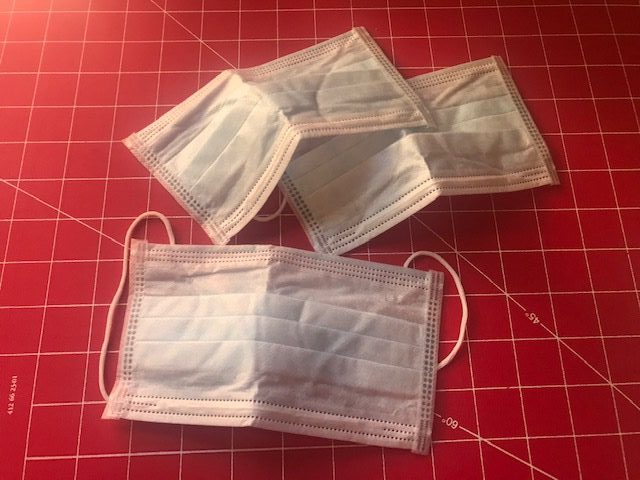Over the past few days, there have been many social media posts and news articles about sewing masks and how quilters and anyone who sews can make surgical masks. These are to help frontline medical staff protect themselves from the novel coronavirus that causes COVID-19. Should we or shouldn’t we be doing this?

Are any masks better than nothing?
Many people believe that using something, anything, is better than nothing. But my concern is how effective these masks are and if they may provide a false sense of security. Please note, I’m not saying not to make them. I’m suggesting caution and know what you’re getting into first.
A study done a few years ago compared the effectiveness of different fabrics in preventing microbes from passing through. The researchers experimented with volunteer-made masks that were made from cotton T-shirt material. The researchers coughed in to a chamber that held the masks and measured the microbes that passed through the fabric. They also tested with an aerosol that contained microbes that were about the same size as influenza virus. To compare the findings, the researchers also performed the same experiments on commercial surgical masks, vacuum cleaner bags, cotton towels (tea towels), anti-microbial fabrics, and scarves.
Study results
The study results showed that all fabrics blocked some microbes, with the commercial surgical masks doing the best job. Vacuum cleaner bags did do a decent job of blocking microbes, but the bags were too stiff and thick for practical use in a mask. They were uncomfortable and it was impossible to get a good seal around the face. Tea towels, although not as stiff as vacuum cleaner bags, had a similar problem that made them unsuitable for making a tight seal around the mouth and nose. The others, the easier to work with fabrics, made for decent masks but they didn’t block many microbes.
Their conclusions
“A protective mask may reduce the likelihood of infection, but will not eliminate the risk, particularly when a disease has more than 1 route of transmission. Thus any mask, no matter how efficient at filtration or how good the seal, will have minimal effect if it is not used in conjunction with other preventative measures, such as isolation of infected cases, immunization, good respiratory etiquette, and regular hand hygiene. An improvised face mask should be viewed as the last possible alternative if a supply of commercial face masks is not available, irrespective of the disease against which it may be require for protection. Improvised homemade face masks may be used to help protect those who could potentially, for example, be at occupational risk from close or frequent contact with symptomatic patients. However, these masks would provide the wearers with little protection from the microorganisms from others who are infected with respiratory diseases. As a result, we would not recommend the use of homemade face masks as a method of reducing transmission of infection from aeresols.”
My thoughts/concerns on sewing masks
The issue with effective masks is not just the fabrics used, but how they fit. Some of these patterns recommend the maker use pony tail elastics for the ear pieces. As a nurse who has worn more masks than I can count, I can’t imagine how uncomfortable a pony tail elastic would be behind my ears. They’re thick and tight. I had a hard enough time with the regular mask elastics. Will people be able to wear them for extended periods? Are there other effective options?
It’s in our nature to want to help out in times of crisis. Look at all the wonderful things that quilters made for the recovering Australian wildlife during the fires that ravaged parts of the country. But if you do want to make masks, ensure the ones you can be used by the people they are intended to help. Before starting, identify where you want the masks to go. See if that institution has its own mask guidelines regarding the pattern and materials used.
I am not trying to discourage anyone from sewing masks – but if you want to make them, I don’t want your hard work to go to waste.
